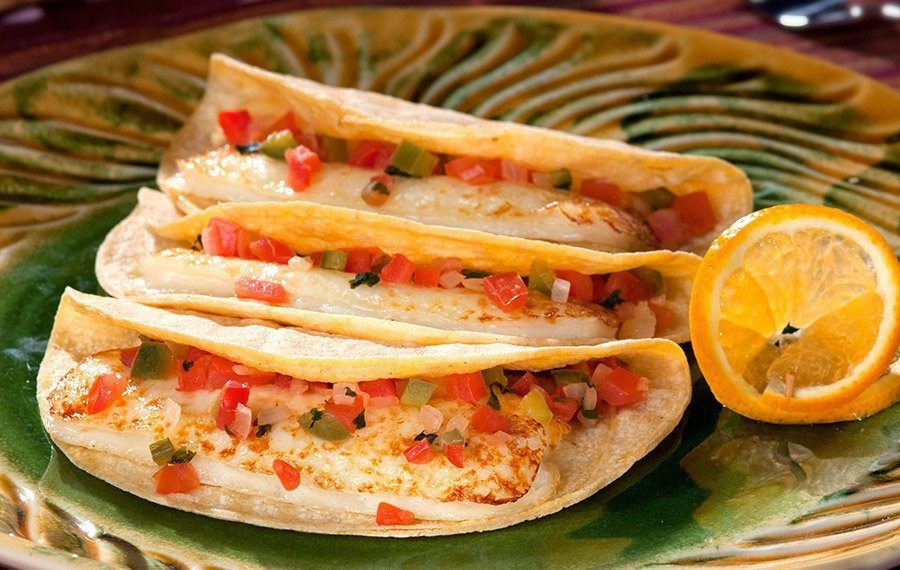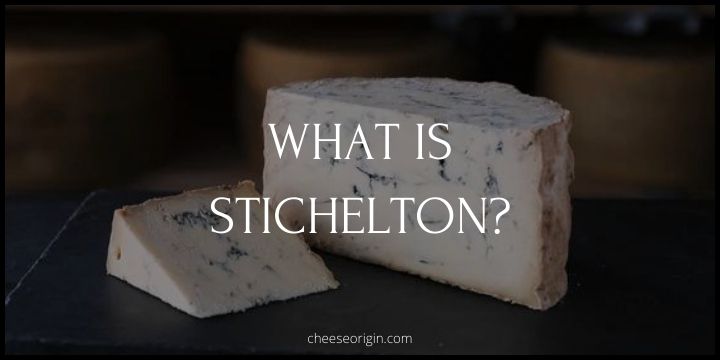What is Asadero? The Mild, Melting Cheese from Mexico

Unveiling the culinary delight that is Asadero, a semi-soft, mild cheese hailing from the northern region of Mexico, particularly the province of Chihuahua. Asadero, a cheese that effortlessly melts and blends into your dishes, adding a creamy, velvety texture that enhances every bite. Often compared to mozzarella in texture but with a character all its own, this cheese is a treasured ingredient in Mexican cuisine.
In the world of cheese, Asadero holds a unique place. It’s sometimes mistaken for other Mexican cheeses like Chihuahua and Oaxaca, but Asadero has a distinct identity and flavor profile that sets it apart. Made from whole cow’s milk and boasting a fresh, mild taste, Asadero is a versatile cheese that’s equally at home melted atop a hot dish or enjoyed with bread or tortillas.
Join us as we delve deeper into the world of Asadero cheese, exploring its origins, uses, and why it’s a must-have in any cheese lover’s repertoire.
Quick Facts About Asadero
| Quick Facts | Details |
|---|---|
| Origin | Mexico, particularly in the northern states such as Chihuahua |
| Type of Milk | Cow’s milk |
| Texture | Semi-soft, smooth, and creamy |
| Flavor | Mild, slightly tangy with a buttery finish |
| Appearance | Pale yellow color, often sold in a braided form or as a round, flat cheese |
| Melting Properties | Excellent, which makes it ideal for quesadillas, nachos, and other melted cheese dishes |
| Similar Cheeses | Provolone, Mozzarella, Oaxaca |
| Aging Time | Typically aged for a short period, resulting in a fresh, mild cheese |
| Nutrition | High in protein and calcium, but also high in fat and calories |
| How to Serve | Traditionally used in Mexican cuisine, in dishes like queso fundido, enchiladas, and chiles rellenos |
What is Asadero Cheese?

Asadero Cheese, a culinary treasure from Mexico, is a semi-soft, creamy cheese that has won the hearts of cheese lovers globally. Originating from the northern states of Mexico, particularly Chihuahua, this cheese is renowned for its smooth texture and mild, slightly tangy flavor with a buttery finish. It’s a distinct variety that adds a unique touch to every dish it graces.
This cheese is typically made from cow’s milk, resulting in a pale yellow hue that gives it an appealing look. Asadero cheese often comes in a braided form or as a round, flat cheese, adding to its charm. One of the most striking features of Asadero cheese is its excellent melting properties. This characteristic makes it a perfect choice for dishes where you want the cheese to melt into a delightful gooeyness, such as quesadillas, nachos, and other Mexican delicacies.
While the flavor profile of Asadero cheese is unique, it bears certain similarities to cheeses like Provolone and Mozzarella. The aging process for Asadero is usually short, resulting in a fresh, mild cheese that is versatile in its use.
Nutritionally, Asadero cheese is high in protein and calcium, aligning with the health benefits typically associated with dairy products. However, it is also high in fat and calories, which should be considered when incorporating it into your diet.
Asadero cheese is traditionally used in Mexican cuisine, featuring prominently in dishes like queso fundido, enchiladas, and chiles rellenos. Its ability to melt beautifully and its mild, creamy flavor make it a favorite ingredient in these classic recipes, bringing an authentic touch of Mexico to your table.
What Does Asadero Taste Like?
Asadero cheese is often described as a string cheese that tastes somewhat like Monterey Jack. This Mexican cheese has a mild and creamy flavor, with a light, fresh taste and just a hint of tanginess. The texture is semi-soft, similar to mozzarella, and it’s layered almost like fresh mozzarella which contributes to its unique taste.
Asadero is also often compared to Provolone in terms of its melting properties and mild flavor. Asadero is a white or pale yellow cheese, and it’s excellent for melting when baking or grilling. Its mild flavor profile makes it a popular choice for dishes such as quesadillas.
If you’re trying Asadero for the first time, expect a creamy, mild cheese with a slight tang and an excellent meltability that’s reminiscent of cheeses like Monterey Jack, Mozzarella, and Provolone.
Asadero Tasting Notes
- Flavor: Asadero has a mild, creamy flavor. It is not overwhelmingly strong or pungent, making it an excellent choice for those who prefer more subtle cheeses. There’s a slight tanginess that adds depth to its overall taste.
- Texture: This cheese has a semi-soft texture, akin to Mozzarella. It’s smooth and creamy, providing a pleasant mouthfeel when consumed. Its layered structure contributes to its unique texture.
- Color: Asadero is typically white or pale yellow in color. Its light hue is a visual indicator of its mild flavor profile.
- Aroma: The aroma of Asadero is light and fresh, reflecting its mild flavor and short aging process. It does not have the strong, pungent smell found in some aged cheeses.
- Melting Properties: One of the standout features of Asadero is its superb melting quality. When heated, it becomes beautifully gooey and stringy, making it an excellent choice for dishes that require melted cheese, such as quesadillas and nachos.
- Pairings: Due to its mild flavor, Asadero pairs well with a variety of foods. It can be used in Mexican dishes like enchiladas and chiles rellenos, complementing the flavors without overpowering them. It also pairs well with fruits, wines, and beers.
- Nutritional Profile: Asadero is high in protein and calcium, offering nutritional benefits. However, like many cheeses, it is also high in fat and calories, which should be considered when incorporating it into a diet.
What is Asadero Made of?

| Ingredient | Purpose |
|---|---|
| Whole Cow’s Milk | This is the primary ingredient for making Asadero cheese. The quality of the milk can significantly affect the final product’s taste and texture. |
| Calcium Chloride | Optional ingredient added when using store-bought pasteurized milk for cheese making. It helps restore the calcium balance and ensures proper curd formation. |
| Cultured Pasteurized Part-Skim Milk | Some versions of Asadero Cheese use this ingredient instead of whole cow’s milk. The culture helps in the fermentation process. |
| Salt | Used to enhance flavor and also plays a role in preserving the cheese. |
| Vinegar | Aids in the curdling process during cheese making. |
| Citric Acid | Acts as a preservative and can also help in the cheese curdling process. |
| Enzymes | These are typically rennet, which is crucial in coagulating the milk to form curds. |
Is Asadero a Healthy Cheese?
- Protein: Asadero cheese is rich in protein. A single ounce (28 grams) slice of Asadero cheese contains approximately 6.33 grams of protein, which can contribute to muscle growth and repair.
- Calcium and Phosphorus: Asadero cheese also provides high amounts of calcium and phosphorus, which are essential for bone health.
- Calories and Fat: However, like many cheeses, Asadero is high in calories and fat.
- Carbohydrates: For those monitoring their carb intake, Asadero cheese has a relatively low carbohydrate content. It contains about 1 gram of carbs per ounce.
The truth is, Asadero cheese can be part of a balanced diet but should be consumed in moderation due to its high calorie and fat content. As with any food, it’s important to consider your overall dietary needs and goals.
Asadero Nutrition Facts
| Nutrient | Amount per 1 oz (28 grams) |
|---|---|
| Calories | 100 kcal |
| Total Fat | 8 g |
| Saturated Fat | 5 g |
| Trans Fat | 0 g |
| Cholesterol | 25 mg |
| Sodium | 180 mg |
| Total Carbohydrate | 1 g |
| Dietary Fiber | 0 g |
| Sugars | 0 g |
| Protein | 6.33 g |
| Vitamin D | 0% Daily Value |
| Calcium | 20% Daily Value |
| Iron | 0% Daily Value |
| Potassium | 0% Daily Value |
What is the Difference Between Asadero and Oaxaca
Asadero and Oaxaca are both popular Mexican cheeses known for their melting qualities, but there are some differences between them:
| Aspect | Asadero Cheese | Oaxaca Cheese |
|---|---|---|
| Origin | From the state of Chihuahua in Mexico. | From the state of Oaxaca in Mexico. |
| Texture | Semi-soft, a bit drier texture. | Semi-soft, creamier texture due to being made with hot water. |
| Flavor | Mild flavor, slightly tangy, often compared to Provolone | Mild flavor, often compared to Mozzarella |
| Usage | Great for melting, used in quesadillas, nachos, and other Mexican dishes. | Known for melting well, used in quesadillas, pizzas, and other traditional Mexican dishes. |
| Production Process | Traditionally made by heating the curds in its own whey. | A stretched curd cheese, where the curds are heated until they can be stretched and folded into long ropes. |
>> Click here to read our in-depth guide on Oaxaca
Is Asadero Cheese the Same as Mozzarella?
Asadero and Mozzarella cheese, while both being creamy and excellent for melting, are not the same. Here are some key differences and similarities:
- Origin: Asadero cheese originates from Mexico, specifically from the state of Chihuahua. On the other hand, Mozzarella is a traditional Italian cheese.
- Taste and Texture: Asadero has a light, fresh taste with a bit of tang to it, and its texture is creamy and layered almost like fresh Mozzarella. Mozzarella is known for its mild and milky flavor. Both cheeses have a similar semi-soft texture.
- Production Process: Asadero cheese is made with cow’s milk, and its production process is somewhat similar to that of Mozzarella cheese. However, traditional Mozzarella is made from Italian buffalo milk (Mozzarella di Bufala) or cow’s milk (Fior di Latte).
- Usage: Both cheeses are versatile and known for their excellent melting qualities. They’re commonly used in dishes like quesadillas, pizzas, and other baked dishes.
- Substitute: Due to their similar texture and mild flavor, Mozzarella is often used as a substitute for Asadero cheese and vice versa.
While they share some similar characteristics, Asadero and Mozzarella are distinct types of cheese each with its own unique attributes.
>> Click here to read our in-depth guide on Mozzarella
10 Best Asadero Cheese Substitutes
| Cheese Substitute | Explanation |
|---|---|
| Oaxaca Cheese | Another Mexican cheese with a similar semi-soft texture and good melting qualities, making it a great substitute for Asadero. |
| Mozzarella | With its mild flavor and excellent melting capabilities, Mozzarella is often used as a substitute for Asadero. |
| Monterey Jack | Monterey Jack also melts very well, making it an excellent substitute when you need a cheese that will hold up under heat. |
| Muenster Cheese | Muenster cheese can be used due to its similar semi-soft texture and mild flavor. |
| Queso Blanco | This is a white, creamy Mexican cheese that could work as a substitute for Asadero in some dishes. |
| String Cheese | String cheese has a slightly creamy, yet stringy consistency that makes it a potential substitute for Oaxaca, and thus, for Asadero. |
| Provolone Cheese (young variety) | The young variety of Provolone cheese could work as a substitute due to its mild flavor and good melting properties. |
| Queso Panela | Queso Panela is a fresh and creamy Mexican cheese that could work as a substitute in some recipes. |
| Cheese Curds | Cheese curds have a mild flavor and soft texture that could work as a substitute in some applications. |
| Ricotta Cheese | While not ideal for all recipes due to its different texture, Ricotta could work as a substitute in some applications where a creamy texture is needed. |
What Pairs Well With Asadero?

Food that goes well with Asadero:
| Category | Foods |
|---|---|
| Bread/Bakery | Flour tortillas, corn tortillas, ciabatta bread, baguettes, multigrain bread |
| Meat/Poultry | Grilled chicken, beef steak, ground beef, pork, chorizo |
| Seafood | Shrimp, crab, white fish, salmon |
| Vegetables | Bell peppers, onions, tomatoes, jalapeños, avocado, olives |
| Fruits | Apples, pears, peaches, grapes |
| Condiments/Sauces | Salsa, guacamole, sour cream, hot sauce, BBQ sauce |
| Nuts/Seeds | Almonds, walnuts, pumpkin seeds, sunflower seeds |
| Herbs/Spices | Cilantro, cumin, chili powder, oregano, garlic |
| Desserts/Sweets | Dark chocolate, honey, fig jam |
| Pasta/Grains | Fettuccine, spaghetti, rice, quinoa |
Also read: What Fruit Goes on a Charcuterie Board?
Beverage that goes well with Asadero:
| Category | Beverages |
|---|---|
| Wine | Chardonnay, Sauvignon Blanc, Pinot Noir, Zinfandel |
| Beer | Pale Ale, Lager, Pilsner, Wheat Beer |
| Spirits | Tequila Blanco, Mezcal, Rum |
| Non-alcoholic | Lemonade, Iced Tea, Sparkling Water, Fresh Lime Juice |
Asadero is a versatile cheese with a mild, creamy flavor that pairs well with a variety of beverages. Its light, fresh taste makes it a great match for both refreshing non-alcoholic drinks and a range of alcoholic beverages.
Also read: Best Wine and Cheese Pairings: The Ultimate Guide
The History and Origin of Asadero
Asadero cheese, or Queso Asadero as it’s known in Mexico, is a popular semi-soft cheese with rich cultural and historical significance. Its origin dates back to the time of the Mexican Revolution. This cheese was first produced in the northern regions of Mexico, specifically in the states of Chihuahua and Durango. Over time, the recipe for Asadero cheese was brought by immigrants to other parts of Mexico and even reached Texas.
The process of making Asadero cheese follows traditional methods passed down through generations. The cheese is made with either vegetable rennet, called trompillo, or animal rennet traditionally from the criollo corriente landrace of cattle. This indicates the deep-rooted connection between cheese and local Mexican agriculture. Interestingly, Asadero cheese is also referred to as Oaxaca or Queso Oaxaca cheese, due to its popularity in the Oaxaca region of Mexico.
The evolution of Asadero cheese is a testament to its adaptability and appeal. From its humble beginnings in the northern regions of Mexico, it has become a staple in Mexican kitchens, both domestically and internationally. Its presence in various dishes has not only enriched the flavors of Mexican cuisine but also preserved a part of its culinary history.
In conclusion, Asadero cheese is more than just a food item. It’s a gastronomic symbol of Mexican heritage, a testament to the country’s rich culinary traditions, and a beloved ingredient that continues to delight palates around the world.
Frequently Asked Questions
1. What does Asadero mean?
The term “Asadero” is derived from the Spanish verb “asar”, which means to roast or grill. Therefore, Asadero essentially translates to “roasting” or “grilling” cheese, reflecting its popular use in dishes where it’s melted or grilled, such as in quesadillas or on top of enchiladas.
2. What are other names for Asadero?
Asadero cheese is known by several other names depending on the region and variation. Some of these include:
- Queso Asadero
- Queso Oaxaca: When it’s stretched into long ribbons and wound into a ball, it’s often referred to as Queso Oaxaca.
- Queso Chihuahua: In some regions, it’s called Queso Chihuahua after the Mexican state of Chihuahua where it is widely produced.
- Queso Menonita: It’s also sometimes called Queso Menonita, named after the Mennonite communities of Mexico that produce a similar type of cheese.
Despite the different names, they all refer to the same type of semi-soft, white, stringy cheese that melts well and is commonly used in a variety of Mexican dishes.
3. Is Asadero cheese vegan?
No, Asadero cheese is not vegan. It’s made from cow’s milk, which is an animal product. Additionally, its production process often involves the use of rennet, which can be either vegetable-based or animal-based. If it’s animal-based, it’s derived from the stomach lining of ruminant animals, which also makes it non-vegan. Even if vegetable rennet is used, the primary ingredient, cow’s milk, still disqualifies it as a vegan product.
Also read:
- What is Robiola? A Taste of Piedmont, Italy
- All About Roquefort: An Insider’s Guide to the King of Blue Cheese
- Asiago Cheese: An In-depth Exploration of Nutrition and Taste
- What is Pepper Jack Cheese? The Spicy Star of American Dairy
- What is American Cheese? The Controversial Delight of the Dairy World
- Emmental: A Comprehensive Guide to Switzerland’s Cheese Haven
- The Ultimate Guide to Kasseri: A Taste of Tradition




